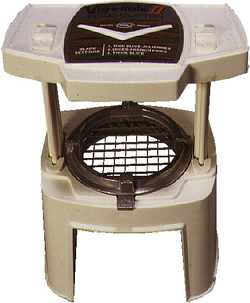First Posted almost 2 years ago and still relevant
 “This is Veg-O-Matic, the world-famous food appliance! . . . the only appliance in the world that slices whole, firm tomatoes in one stroke, with every seed in place. . . . French fries? Make hundreds in one minute! . . . Isn’t that amazing?!”
“This is Veg-O-Matic, the world-famous food appliance! . . . the only appliance in the world that slices whole, firm tomatoes in one stroke, with every seed in place. . . . French fries? Make hundreds in one minute! . . . Isn’t that amazing?!”
Let’s face it, the really big money is made in the big trending markets. What happens after a big trend comes to an end? Well, that is when you enter into a period of uncertainty.
Some traders like to characterize this as a trading range. I would refer to it as a Veg-O-Matic market, as it cuts and slices most traders to pieces.
No matter what you call it, trading range or Veg-O-Matic market, it is important to remember that you remain patient and wait for another defined trend to begin.
So how do you tell if a market is in a trading range?
The easiest way is to use MarketClub’s Trade Triangle technology. When you see a Chart Analysis Score of around 55-65 on the chart, it indicates that there is no discernible trend present. Trading range markets, or Veg-O-Matic markets, are best left to the professionals.
If you do feel the urge to trade in a market like I described above, you are better off using some sort of oscillator like the Williams %R indicator or a fast stochastic indicator. These indicators allow nimble traders to catch the swings, up and down. For the average trader, this is a time to be on the sidelines and looking at other opportunities in other markets.
Make no mistake about it, trading range markets are generally difficult to trade and generally do not give up profits easily.
So remember, if it’s a big Veg-O-Matic market, you’re better off waiting on the sidelines until you see a clear trend develop.
All the best,
Adam Hewison
President, INO.com
Co-creator of MarketClub.com
P.S. Samuel J. Popeil invented the Veg-O-Matic. He also created the frenzied ads that made his product a late-night television sensation in the late 1960s and 1970s.





 Today's guest is Karen Stanlake of RangeTraders.com. Karen is going to tell us about the difference between trading and trending markets and some tools she uses in each market condition.
Today's guest is Karen Stanlake of RangeTraders.com. Karen is going to tell us about the difference between trading and trending markets and some tools she uses in each market condition.
